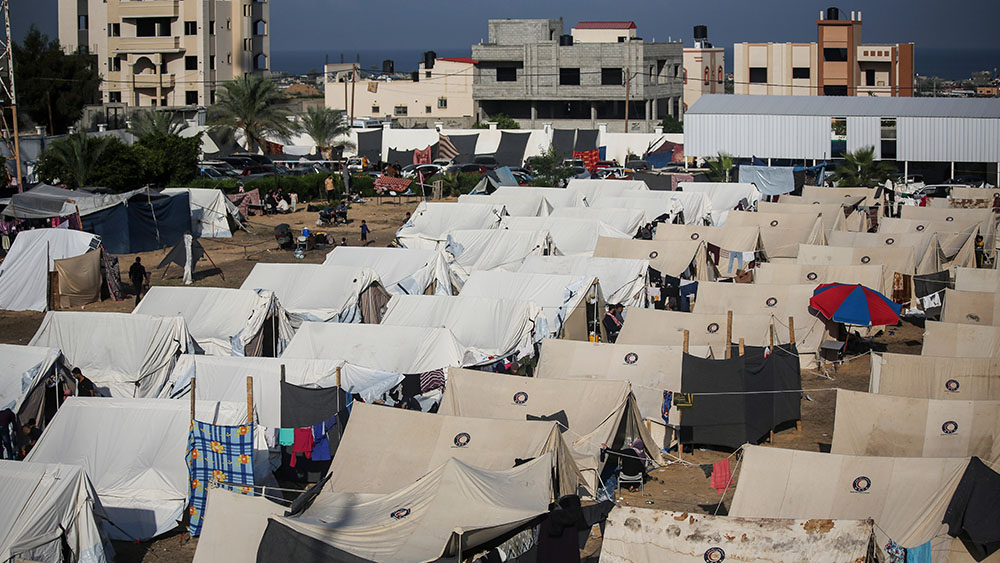Cocoa prices rise to highest level in 45 years as poor weather diminishes outlook for harvests
11/14/2023 / By Arsenio Toledo

Cocoa prices in New York rose to more than $4,000 per ton on Friday, Nov. 10, the highest level since 1978, as the outlook of poor crop harvests in the world’s cocoa capital of West Africa caused prices to skyrocket.
Global cocoa supplies are tightening amid concerns that current cocoa production levels might not be enough to replenish global stocks to avoid a deficit that underpins lower prices.
In a recent report, the government of the Ivory Coast – the world’s largest cocoa producer – reported that, from Oct. 1 to Nov. 5, Ivorian farmers were only able to ship 288,686 metric tons (318,222 tons) of cocoa to the country’s ports. This is a decrease of a whopping 17.3 percent compared to the same time last year. (Related: Food shortages and inflation continue as “Bidenomics” SPECTACULARLY FAILS.)
In Ghana, the world’s second-largest producer, the country’s cocoa regulator, the Ghana Cocoa Board (Cocobod), warned that more of its cocoa farmers are unlikely to fulfill their cocoa production contracts for a second straight season this year. Ghana’s 2022 to 2023 cocoa crop is expected to be around 683,000 metric tons (752,900 tons), a 13-year low and 24 percent below initial estimates of 850,000 metric tons (937,000 tons).
Cocobod has primarily blamed the situation on a lack of fertilizers and poor weather spreading black pod disease – a protozoal disease that can cause yields to drop by a third and lead to the death of 10 percent of cocoa trees at outbreak areas. The spread of this disease, which can cause cocoa pods to turn black and rot, could also affect cocoa production and crop quality, pushing the global cocoa market into an even longer deficit.
Cocobod has reacted by postponing the shipping of 44,000 metric tons (48,502 tons) of cocoa due to a lack of supplies.
The lower production all over West Africa has made major chocolate firms like Mondelez International increase their prices.
Poor crop harvests, extreme weather making cocoa harvest outlooks poor
Analysts are warning that El Niño-induced weather disturbances could bring even drier weather conditions to West African nations like Ivory Coast and Ghana, the world’s top growers of cocoa. They warn that this could result in a third straight year of cocoa harvest deficits.
“The expectation of a supply deficit has been compounded with weather variations, especially in West Africa,” warned the International Cocoa Organization in a recent report.
El Niño refers to a warming of the ocean surface in the central and eastern tropical Pacific Ocean. The low-level surface winds, which normally blow from east to west along the equator, instead weaken or, in some cases, start blowing the other direction. El Niño events can disrupt normal weather patterns globally.
In 2016, following an El Niño weather event that caused drought and hampered global cocoa production, cocoa prices rallied to a 12-year high.
The poor conditions of current cocoa production and the negative outlook for future crop yields have caused prices for candy to jump by 13 percent in October compared to prices last year.
Watch this episode of the “Health Ranger Report” as Mike Adams, the Health Ranger, interviews Steve Poplar about how they can see the food supply chain collapsing in real time.
This video is from the Health Ranger Report channel on Brighteon.com.
More related stories:
Globalists weaponize food and energy supply to pave the way for global “Holodomor.”
Global elites’ secret plot against food: Why you might be forced to eat lab meat soon.
Drug and food shortages are here, and they will get a lot worse.
FDa finally admits that cocoa flavanols boost cardiovascular health.
Hershey’s CFO says company will remove TOXIC metals linked to CANCER in its chocolates.
Sources include:
Submit a correction >>
Tagged Under:
agriculture, black pod disease, climate, cocoa, ecology, environment, farming, food collapse, food inflation, food prices, food shortages, food supply, Ghana, grocery, harvests, hunger, Ivory Coast, products, rationing, scarcity, starvation, supply chain, weather terrorism, West Africa
This article may contain statements that reflect the opinion of the author
RECENT NEWS & ARTICLES
FoodScarcity.News is a fact-based public education website published by CORONA2019 News Features, LLC.
All content copyright © 2022 by Food Scarcity News Features, LLC.
Contact Us with Tips or Corrections
All trademarks, registered trademarks and servicemarks mentioned on this site are the property of their respective owners.




















